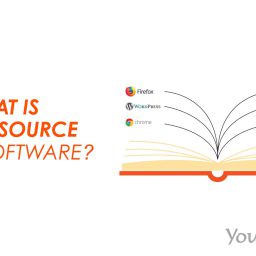
Micro Frontends, an architectural style gaining prominence in modern web development, is a concept that LeMeniz has wholeheartedly embraced. This approach involves breaking down a web application’s frontend into smaller, independent, and loosely coupled components. LeMeniz Software Developers have been at the forefront of exploring and implementing Micro Frontends, bringing agility and scalability to their projects. Let’s delve into this innovative approach:
- Decomposition of Monoliths:LeMeniz recognizes that many applications start as monoliths, where the frontend and backend are tightly coupled. Micro Frontends offer a solution by decomposing monoliths into smaller, manageable parts. This enables independent development, testing, and deployment of individual features.
- Independently Deployable Components:One of the key advantages LeMeniz sees in Micro Frontends is the ability to deploy parts of the frontend independently. This agility allows for faster release cycles and quicker responses to user feedback without affecting the entire application.
- Technology Diversity:Embracing technology diversity is a hallmark of LeMeniz’s approach. Micro Frontends allow each component to be built using different technologies, languages, or frameworks, enabling teams to choose the right tool for the job without constraints.
- Isolation and Autonomy:LeMeniz understands the importance of isolation and autonomy in development. With Micro Frontends, teams can work on their components independently, making decisions without being hindered by the choices made in other parts of the application.
- Improved Team Collaboration:Collaboration is a key focus for LeMeniz. Micro Frontends facilitate collaboration between frontend teams, fostering a sense of ownership and responsibility for specific features or sections of the application.
- Efficient Scaling:As projects grow, so does the need for scalability. LeMeniz leverages Micro Frontends to scale applications efficiently. Teams can scale horizontally by adding more components or vertically by enhancing the functionality of existing ones.
- Enhanced User Experience:From a user’s perspective, Micro Frontends can contribute to a better experience. LeMeniz ensures that components can be loaded independently, reducing initial load times and providing a smoother user interface.
- Seamless Integration:Integrating Micro Frontends seamlessly is a priority for LeMeniz. By leveraging techniques like lazy loading and asynchronous loading, the user experience remains cohesive even as different components are dynamically loaded.
- Consistent Design Language:Maintaining a consistent design language across Micro Frontends is a challenge that LeMeniz tackles effectively. Style guides, design systems, and shared components ensure a unified and branded user interface.
- Robust Testing Strategies:LeMeniz places a strong emphasis on testing. Each Micro Frontend undergoes rigorous testing, and strategies such as contract testing are employed to ensure that components can work together seamlessly.
- Containerization for Micro Frontends:Containerization, exemplified by technologies like Docker, is often used by LeMeniz to package Micro Frontends. This ensures consistency in deployment across different environments.
- Continuous Integration and Deployment (CI/CD):CI/CD pipelines are integral to LeMeniz’s development workflow. Automation ensures that changes in Micro Frontends can be rapidly and reliably deployed, maintaining a high pace of development.
In conclusion, LeMeniz’s exploration of Micro Frontends exemplifies a commitment to modern, scalable, and efficient web development. By breaking down monolithic structures, embracing technology diversity, and fostering collaboration, LeMeniz Software Developers are at the forefront of creating flexible and user-centric web applications.















